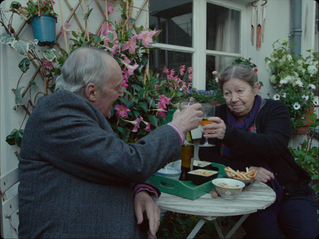Orlando
- Kirby Moore
- Jan 19, 2022
- 3 min read
Updated: Jan 20, 2022
Sally Potter, 1992

Love. Poetry. Politics. Society. Sex. Birth. These are the markers provided to the audience as an ageless Orlando traverses nearly four centuries of history. Adapted from Virginia Woolf’s novel of the same name, Sally Potter’s 1992 Orlando is a film not-so-subtly rooted in themes of change.
Woolf’s Orlando is an icon of queer literature, whose transformation from male to female is celebrated for capturing the nuance of sexuality and gender fluidity. Crucial to the message and themes of the film, and despite this physical change, Tilda Swinton’s Orlando directly addresses the viewer and states in no uncertain terms that she is the same person; there is ‘no difference at all—just a different sex’. This intrinsic metamorphosis is accompanied by the unescapable, time decreed transformations of human existence. The film captures the fabulous juxtaposition between continuous historical change and the character of Orlando, whose inability to age renders them a constant in a rapidly developing world. Their constancy, however, does not translate to a static state. As the world changes politically, socially, and stylistically, so too does Orlando.
In absence of a linear or classically Hollywood plot, the film relies on a beautifully constructed mise-en-scène to impart, non-verbally, the metamorphosing historical landscape. It is successful; Orlando is an aesthetic delight. Of particular note is the costuming by Sandy Powell and Dien van Straalen. With the change of Orlando’s sex so comes the change of Orlando’s wardrobe, and ingrained within the respective wardrobes is an inseparability from the gender roles they represent. A comment upon gender and change, the costuming in Orlando provides a series of delectable visual cues that signify a transforming world.
1600, 1610, 1700… As the decades pass, intertitles clarify the centuries Orlando inhabits. This is not strictly necessary; the costuming communicates the time period flawlessly, even to those with the most rudimentary knowledge of historical fashion. Style in clothing transforms — as does every form of art and design — alongside society. Indeed, style is not a stand-alone element, but a product of the social, political and economic changes that shape its development; it is inseparable from human history. Orlando employs costuming to play upon associations and connotations linked to the clear stylistic conventions of the respective centuries, and the figures and events they suggest. The transformation of clothing style is an aesthetic means of illustrating the passing of time.
In the early 17th century, Orlando’s slashed sleeves are a stylistic remnant of the Tudor Renaissance, and perhaps an homage to Elizabeth I, the last Tudor monarch and the character who bids Orlando ‘Do not fade. Do not wither. Do not grow old’. Orlando’s heavy doublets, hose and neck ruffs are more identifiable — the quintessential picture of Shakespearian drama. Consolidating this association in a metadramatic fashion (Shakespearian in itself), Orlando pauses to watch Othello cry ‘…killing myself, to die upon a kiss!’
Orlando appears again in 1650 with a romantic heart for poetry and a wardrobe to match. The array of ruffles and ribbons and fringes and frills are suggestive of Charles II’s approaching Stuart Restoration. Oversized sleeves and collar bows create an appearance of youthfulness and innocence which belies the political turbulence of the period in the aftermath of the late King’s execution, and the unprecedented formation of an English Republic.
Following this, Orlando’s wardrobe develops into what is possibly the most exaggerated in the film. It savours strongly of the court of the Sun King, Louis XIV of France, complete with heeled shoes, justaucorps (a knee-length coat) and plumed tricorn hats. The costuming does not yet depart from its associations with French style. In the mid 18th century, Orlando appears in ensembles of excess. With an abundance of ruffles and wide pannier skirts, the newly Lady Orlando appears on different occasions in a robe à la française, and a macaron-blue and beflowered gown reminiscent of Marie Antoinette. Paired with elaborate wigs, the costuming in this century positively cries ‘vive la révolution!’
At this point Orlando enters a hedge maze in her French-flavoured gown, and, accompanied by delightful camera work, appears to exit the labyrinth one hundred years later, in 1850. The costuming and imagery of Orlando’s 1850s life are evocative of the classic mid-century gothic novels: of Jane Eyre, of Wuthering Heights. The sets, lighting and cinematography also work to establish the time period. While an off-screen steam train references the Industrial Revolution, dressed in a deep green tartan, Orlando’s crinoline-supported silhouette is unmistakable of the mid-19th-century style.
Orlando’s ability to contrast time, change and agelessness through the medium of costume is enchanting. It captures the constantly transforming nature of style and its ability to conjure associative connections between visual appearance, social change and human history. The costuming illustrates an aesthetic metamorphosis of society, providing the backdrop on which Orlando’s own personal story is told.








Comments